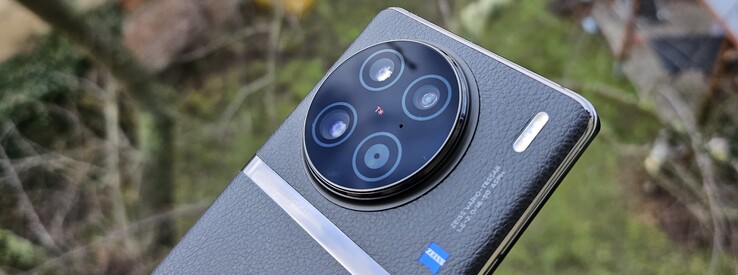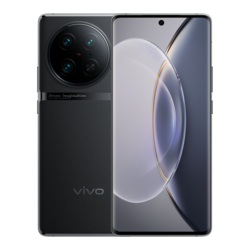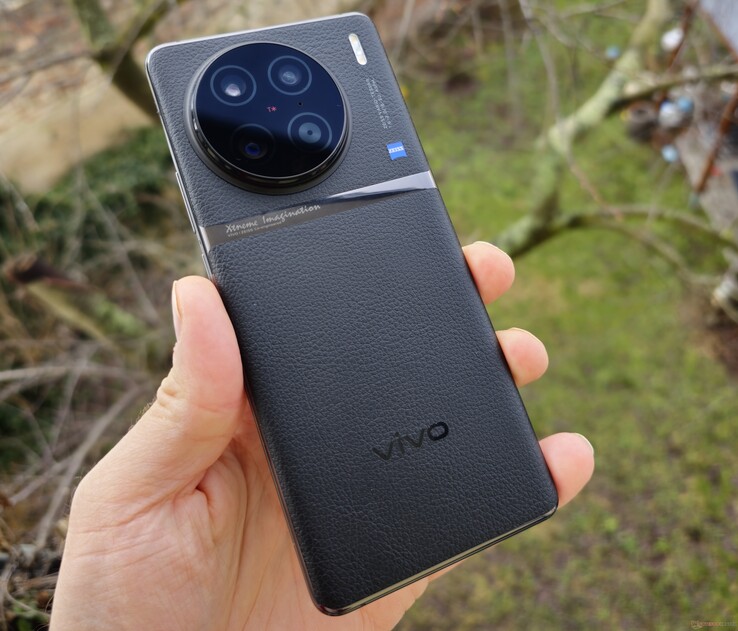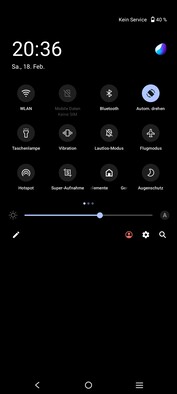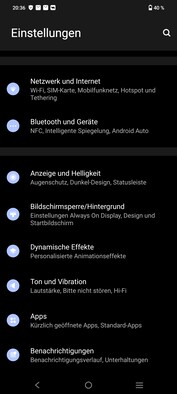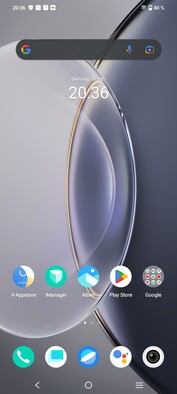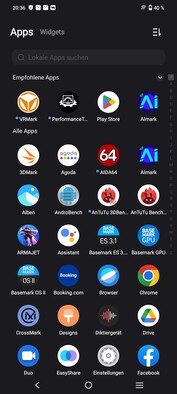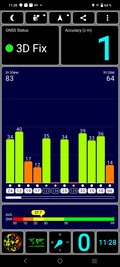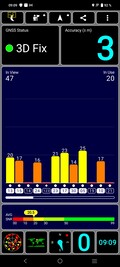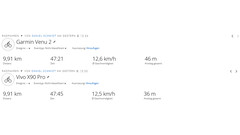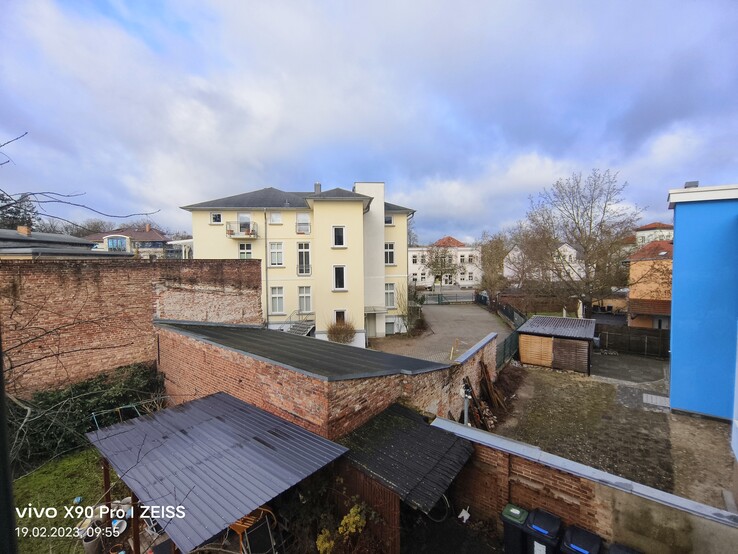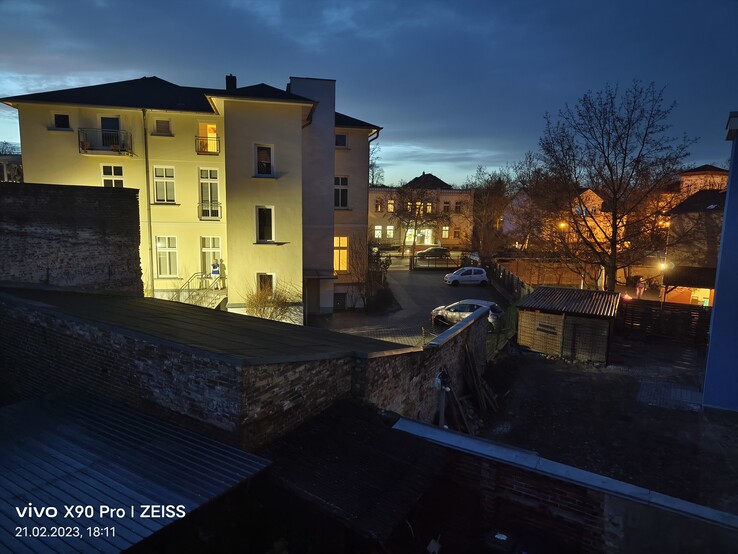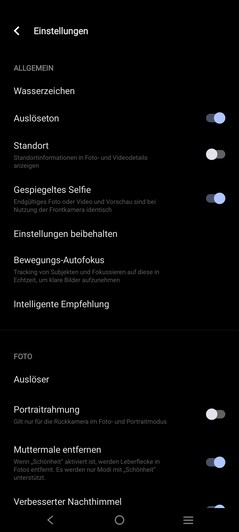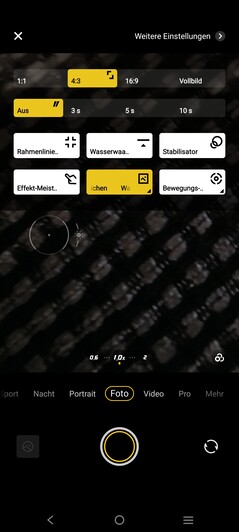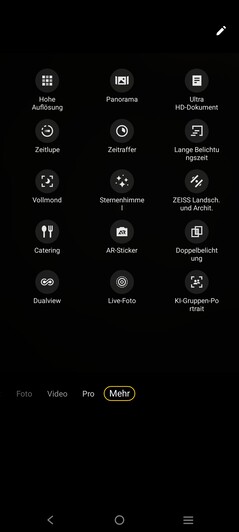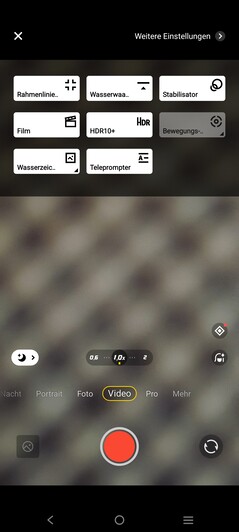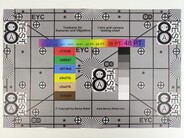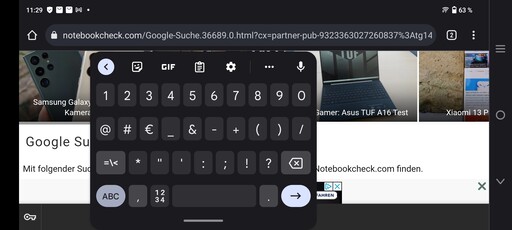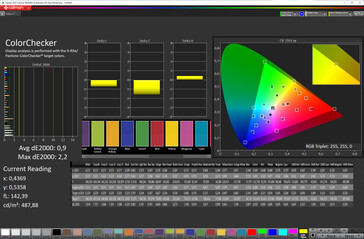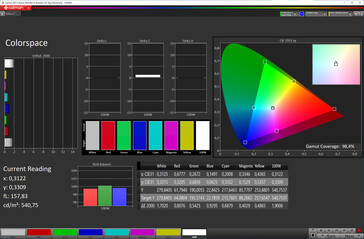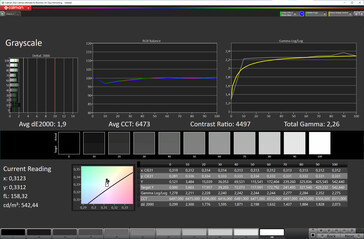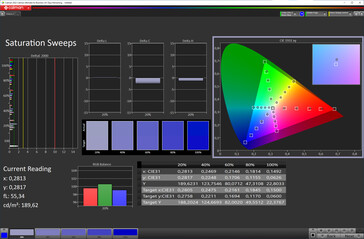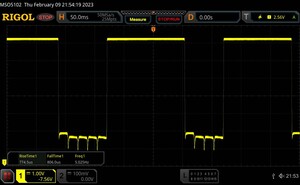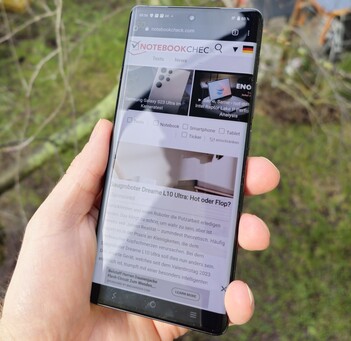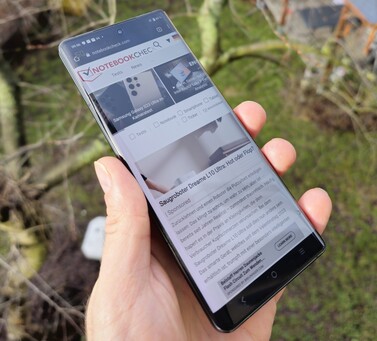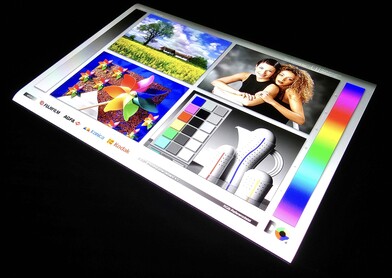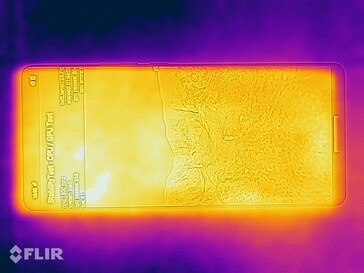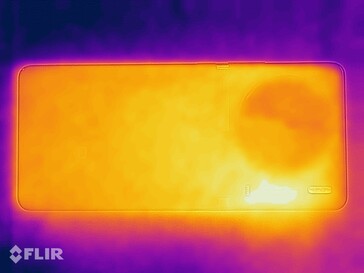Vivo X90 Pro smartphone review - Can MediaTek's high-end SoC keep up with the Snapdragon 8 Gen 2?
After we already reviewed the actual flagship of the X90 series, the Vivo X90 Pro+, which is only available in China or as an import, we will take a closer look at the European top model. The Vivo X90 Pro also relies on a camera system with Zeiss branding and Sony's large IMX989 image sensor in a 1-inch format.
The Vivo X90 Pro's features are also impressive. The 6.78-inch, 120 Hz Samsung E6 AMOLED panel has a peak brightness of 1,300 nits, and the fast MediaTek Dimensity 9200 chipset, which is supported by 12 GB of RAM and 256 GB of storage.
Update - 27.02.2023: Vivo Germany has informed us that our review sample is not the intended European version of the X90 Pro, but a version for the Asian region with Funtouch OS. The EU version will replace Vivo's own apps with Google services. The camera settings (including more natural skin tones) are also different and the gaming performance is supposed to be better.
Possible competitors in comparison
Rating | Date | Model | Weight | Drive | Size | Resolution | Price |
|---|---|---|---|---|---|---|---|
| 89.1 % v7 (old) | 02 / 2023 | Vivo X90 Pro Dimensity 9200, Immortalis-G715 MP11 | 214.9 g | 256 GB UFS 4.0 Flash | 6.78" | 2800x1260 | |
| 89.1 % v7 (old) | 02 / 2023 | Xiaomi 13 SD 8 Gen 2, Adreno 740 | 189 g | 256 GB UFS 4.0 Flash | 6.36" | 2400x1080 | |
| 89.1 % v7 (old) | 11 / 2022 | Google Pixel 7 Pro Tensor G2, Mali-G710 MP7 | 212 g | 128 GB UFS 3.1 Flash | 6.70" | 3120x1440 | |
| 87 % v7 (old) | 08 / 2022 | OnePlus 10T SD 8+ Gen 1, Adreno 730 | 203.5 g | 256 GB UFS 3.1 Flash | 6.70" | 2412x1080 | |
| 90 % v7 (old) | 02 / 2023 | Vivo X90 Pro+ SD 8 Gen 2, Adreno 740 | 221 g | 256 GB UFS 4.0 Flash | 6.78" | 3200x1440 |
Case - Vivo X90 Pro with Punch-Hole
The Vivo X90 Pro offers, like the Pro+ model, a kind of leather texture and a huge camera module on the back - the Chinese manufacturer calls this Golden Ratio Skyline design. Apart from that, the looks of both X90 smartphones are very similar and the value is also worth emphasizing. Analogous to the predecessor, the X90 Pro comes exclusively in the black color on the local market. A gray variant is also available as an import device.
Like the X80 Pro, the X90 Pro is both dust- and water-resistant according to IP68 standard. With 90.8 percent, the upper-class phone also has a very efficient ratio of the screen to the total surface on the front. Speaking of the display, the manufacturer does not specify which protective glass has been installed in the X90 Pro.
Equipment - Vivo smartphone with UFS 4.0
In terms of equipment, the X90 Pro features a dual speaker system, Bluetooth 5.3, fast UFS 4.0 storage, and an NFC chip for contactless payment. In addition, Vivo relies on a USB 3.2 port (Gen. 1), which enables high data transfers and wired image output via HDMI or DisplayPort interfaces. In our copy test including a connected M2.SSD hard drive (Samsung 980 Pro), the USB port's transfer rate is 212 MB/s, which is clearly below the theoretical peak level.
Software - Vivo phone with Android 13
The Vivo X90 Pro comes with Google Android 13 and the in-house Funtouch OS 13 installed. If you are interested in importing the X90 Pro, you should consider that Vivo does not use the Funtouch interface in China, but the Chinese equivalent Origin OS.
Funtouch OS 13 has security patches from January 2023 at the time of the test. How long the Vivo smartphone will enjoy OS upgrades and security updates has not been officially communicated - the X80 Pro had updates for three years.
Communication and GNSS - Vivo X90 Pro with WiFi 6E
The transfer rates in the home network are high with the Vivo phone since the WLAN module communicates with our reference router Asus ROG Rapture GT-AXE11000 in the 2.4 and 5 GHz range as well as via the 6 GHz frequency band. However, the low reception rates in both the 5- and 6-GHz ranges are noticeable. Access to the LTE network including many supported 4G frequencies is guaranteed, and switching to the fast 5G standard is also possible.
| Networking | |
| Vivo X90 Pro | |
| iperf3 receive AXE11000 | |
| iperf3 transmit AXE11000 | |
| iperf3 transmit AXE11000 6GHz | |
| iperf3 receive AXE11000 6GHz | |
| Xiaomi 13 | |
| iperf3 receive AXE11000 | |
| iperf3 transmit AXE11000 | |
| iperf3 transmit AXE11000 6GHz | |
| iperf3 receive AXE11000 6GHz | |
| Google Pixel 7 Pro | |
| iperf3 receive AXE11000 | |
| iperf3 transmit AXE11000 | |
| iperf3 transmit AXE11000 6GHz | |
| iperf3 receive AXE11000 6GHz | |
| OnePlus 10T | |
| iperf3 receive AXE11000 | |
| iperf3 transmit AXE11000 | |
| Vivo X90 Pro+ | |
| iperf3 receive AXE11000 | |
| iperf3 transmit AXE11000 | |
| Average of class Smartphone | |
| iperf3 receive AXE11000 | |
| iperf3 transmit AXE11000 | |
| iperf3 transmit AXE11000 6GHz | |
| iperf3 receive AXE11000 6GHz | |
We check the tracking accuracy with a practical test on a bicycle. During our short trip, we recorded the route with a Garmin Venu 2 for comparison purposes. From time to time, the determined curve profiles deviate from the actual route, but the deviations in the detailed view of the GPS recording can still be rated as very low overall.
Phone features and voice quality - Vivo phone with DualSIM
The dual-SIM smartphone supports VoLTE, and calls are also allowed via the home WLAN (WiFi calling). In contrast to the predecessor Vivo flagship now supports an eSIM.
The voice quality of the X90 Pro is inconspicuous. Voices are reproduced cleanly and our interlocutor also characterized them as clear.
Camera - Vivo smartphone with 1-inch sensor
The 32 MP front-facing camera enables decent selfies, but the relatively dark pictures of the portrait mode are conspicuous.
The centerpiece of the camera group on the back with ZEISS branding is, as with the X90 Pro+, the large 1-inch Sony sensor, which delivers really good pictures during the day as well as at night. The photos sometimes look too brightened, but have a good basic sharpness - sometimes the autofocus does not always fit (see rabbit motifs). The photos tend to be a bit softer, which looks more natural compared to the over-sharpened photo of the Apple iPhone 14 Pro. The Vivo phone cannot completely convince in terms of color reproduction; green tones are displayed a bit too brightly. However, users who prefer natural colors can activate the Zeiss mode.
In contrast to the predecessor the X90 Pro has to do without a high-resolution ultra-wide-angle camera. The photos look a bit noisy even in good light conditions and lack details. In return, the Vivo phone has quite good zoom qualities, although it does not have a periscope camera and only a 2x lossless zoom. However, the X90 Pro retains many details up to a five-fold magnification. The dedicated Vivo V2 image processor and in-house software optimizations ensure solid image quality in this respect.
Image comparison
Choose a scene and navigate within the first image. One click changes the position on touchscreens. One click on the zoomed-in image opens the original in a new window. The first image shows the scaled photograph of the test device.
Main cameraMain cameraUltra wide-angleLow Light5x Zoom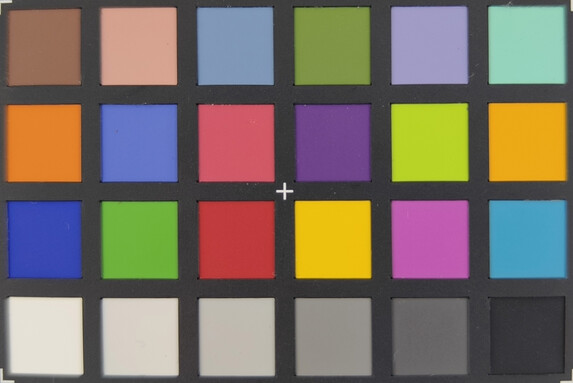
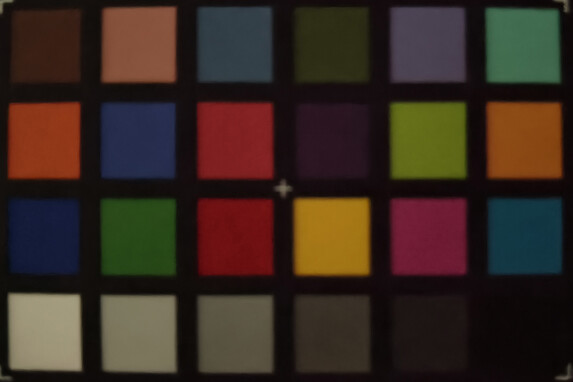
Accessories and warranty - Vivo X90 Pro with power adapter
The Vivo phone comes with a modular 120-watt power supply, a USB cable, and a protective case. A protective film is also installed ex-factory.
The Warranty is 24 months after the purchase date.
Input devices & operation - Vivo Phone with Ultrasonic fingerprint sensor
A real feature of the predecessor X80 Pro is the huge 3D ultrasonic fingerprint sensor, which we also saw in the X90 Pro+. However, the X90 Pro only has an optical fingerprint sensor, so the area is much smaller, only one finger can be scanned, and the recognition rate cannot keep up with the class leader of the predecessor. It is a pity that Vivo has skimped here. However, the X90 Pro still features biometric authentication via 2D facial recognition using the front-facing camera.
Display - Vivo X90 Pro with OLED
At first glance, not much has changed in the display. Like the predecessor, the OLED panel of the X90 Pro measures 6.78 inches diagonally and has a refresh rate of up to 120 Hz. An adaptive adjustment of the frequency is still not possible, but an automatic switching between 60 Hz and 120 Hz is available. A big difference is seen in the pixel density. While the Vivo X80 Pro is equipped with a QHD+ resolution, the AMOLED display of the X90 Pro only works with Full HD+.
The Vivo smartphone uses PWM with a very low frequency of 60 Hz to control the luminance, which is typical for OLEDs, but the fluctuations are small. The maximum luminance of over 1000 cd/m² in the peak that we measured is very good, and the realistic APL18 test (Average Picture Level) also results in a satisfactory maximum brightness of 1225 cd/m² for this price range. A Xiaomi 13 is considerably brighter with 1,765 cd/m².
| |||||||||||||||||||||||||
Brightness Distribution: 93 %
Center on Battery: 1018 cd/m²
Contrast: ∞:1 (Black: 0 cd/m²)
ΔE ColorChecker Calman: 0.9 | ∀{0.5-29.43 Ø4.79}
ΔE Greyscale Calman: 1.9 | ∀{0.09-98 Ø5}
99.9% sRGB (Calman 2D)
Gamma: 2.26
CCT: 6473 K
| Vivo X90 Pro AMOLED, 2800x1260, 6.8" | Xiaomi 13 OLED, 2400x1080, 6.4" | Google Pixel 7 Pro OLED, 3120x1440, 6.7" | OnePlus 10T Fluid AMOLED, 2412x1080, 6.7" | Vivo X90 Pro+ AMOLED, 3200x1440, 6.8" | |
|---|---|---|---|---|---|
| Screen | -6% | 9% | -54% | -5% | |
| Brightness middle (cd/m²) | 1018 | 1209 19% | 1022 0% | 861 -15% | 1109 9% |
| Brightness (cd/m²) | 1026 | 1208 18% | 1025 0% | 856 -17% | 1124 10% |
| Brightness Distribution (%) | 93 | 98 5% | 99 6% | 97 4% | 96 3% |
| Black Level * (cd/m²) | |||||
| Colorchecker dE 2000 * | 0.9 | 1.2 -33% | 0.9 -0% | 2.27 -152% | 1.1 -22% |
| Colorchecker dE 2000 max. * | 2.2 | 3 -36% | 2.1 5% | 4.17 -90% | 2.7 -23% |
| Greyscale dE 2000 * | 1.9 | 2.1 -11% | 1.1 42% | 2.9 -53% | 2 -5% |
| Gamma | 2.26 97% | 2.26 97% | 2.22 99% | 2.303 96% | 2.25 98% |
| CCT | 6473 100% | 6504 100% | 6650 98% | 6141 106% | 6605 98% |
* ... smaller is better
Screen Flickering / PWM (Pulse-Width Modulation)
| Screen flickering / PWM detected | 60 Hz | ||
The display backlight flickers at 60 Hz (worst case, e.g., utilizing PWM) . The frequency of 60 Hz is very low, so the flickering may cause eyestrain and headaches after extended use. In comparison: 53 % of all tested devices do not use PWM to dim the display. If PWM was detected, an average of 8152 (minimum: 5 - maximum: 343500) Hz was measured. | |||
Measurement series with fixed zoom level and different brightness settings
Our display color analysis is performed with the help of a photospectrometer and the Calman software. The deviations in the color (0.9) and grayscale (1.9) representation are very low in the ZEISS profile and the color temperature of the panel is almost optimally calibrated. The high coverage of the color spaces is also worth mentioning; even the DCI-P3 is covered almost completely.
Display Response Times
| ↔ Response Time Black to White | ||
|---|---|---|
| 1.35 ms ... rise ↗ and fall ↘ combined | ↗ 0.6915 ms rise | |
| ↘ 0.6615 ms fall | ||
| The screen shows very fast response rates in our tests and should be very well suited for fast-paced gaming. In comparison, all tested devices range from 0.1 (minimum) to 240 (maximum) ms. » 6 % of all devices are better. This means that the measured response time is better than the average of all tested devices (20.3 ms). | ||
| ↔ Response Time 50% Grey to 80% Grey | ||
| 1.56 ms ... rise ↗ and fall ↘ combined | ↗ ms rise | |
| ↘ ms fall | ||
| The screen shows very fast response rates in our tests and should be very well suited for fast-paced gaming. In comparison, all tested devices range from 0.165 (minimum) to 636 (maximum) ms. » 6 % of all devices are better. This means that the measured response time is better than the average of all tested devices (31.7 ms). | ||
Outdoors, the X90 Pro makes a very good impression thanks to the high brightness in automatic mode. Even in midsummer sunlight, the display content should still be sufficiently visible. However, those who prefer to adjust the brightness manually will have to be content with 525 cd/m² and partly annoying reflections.
The viewing angles of the OLED panel are very good and the brightness drop is only noticeable from an extremely flat angle.
Performance - Vivo smartphone with MediaTek SoC
The X90 Pro features the latest flagship SoC from MediaTek, which is manufactured by TSMC in a second-generation 4 nm process. The chipset combines an ARM Cortex X3 core (3.05 GHz) with three ARM Cortex A715 performance cores (2.85 GHz) and four frugal Cortex A510 cores (1.8 GHz). For the graphics unit, MediaTek relies on the new ARM Immortalis G715 with eleven cores.
Compared to the Snapdragon 8 Gen 2 in the Pro+ model the single-core performance of the MediaTek Dimensity 9200 is lower by 7% and the multi-thread performance by 12%. PCMark's system benchmark also turns out relatively low.
| CrossMark - Overall | |
| Xiaomi 13 | |
| Average of class Smartphone (187 - 2674, n=132, last 2 years) | |
| Vivo X90 Pro+ | |
| Vivo X90 Pro | |
| Average MediaTek Dimensity 9200 (n=1) | |
| Google Pixel 7 Pro | |
| OnePlus 10T | |
| UL Procyon AI Inference for Android - Overall Score NNAPI | |
| Vivo X90 Pro | |
| Google Pixel 7 Pro | |
| Average MediaTek Dimensity 9200 (40276 - 44483, n=2) | |
| Average of class Smartphone (3769 - 81594, n=139, last 2 years) | |
| Vivo X90 Pro+ | |
| Xiaomi 13 | |
| OnePlus 10T | |
| AImark - Score v2.x | |
| OnePlus 10T | |
| Google Pixel 7 Pro | |
The MediaTek Dimensity 9200 performs well in GFXBench's graphics tests. However, even the onscreen rates are often lower than in the Pro+ model which has to cope with the significantly higher resolution. The browser benchmarks and the BaseMark OS II browser test are also conspicuously low.
GFXBench (DX / GLBenchmark) 2.7: T-Rex Onscreen | 1920x1080 T-Rex Offscreen
GFXBench 3.0: on screen Manhattan Onscreen OGL | 1920x1080 1080p Manhattan Offscreen
GFXBench 3.1: on screen Manhattan ES 3.1 Onscreen | 1920x1080 Manhattan ES 3.1 Offscreen
GFXBench: on screen Car Chase Onscreen | 1920x1080 Car Chase Offscreen | on screen Aztec Ruins High Tier Onscreen | 2560x1440 Aztec Ruins High Tier Offscreen | on screen Aztec Ruins Normal Tier Onscreen | 1920x1080 Aztec Ruins Normal Tier Offscreen
| 3DMark / Wild Life Extreme Unlimited | |
| Vivo X90 Pro | |
| Xiaomi 13 | |
| Vivo X90 Pro+ | |
| OnePlus 10T | |
| Google Pixel 7 Pro | |
| 3DMark / Wild Life Extreme | |
| Vivo X90 Pro | |
| Xiaomi 13 | |
| Vivo X90 Pro+ | |
| OnePlus 10T | |
| Google Pixel 7 Pro | |
| 3DMark / Wild Life Unlimited Score | |
| Vivo X90 Pro+ | |
| Xiaomi 13 | |
| Vivo X90 Pro | |
| OnePlus 10T | |
| Google Pixel 7 Pro | |
| GFXBench (DX / GLBenchmark) 2.7 / T-Rex Onscreen | |
| Google Pixel 7 Pro | |
| Xiaomi 13 | |
| Vivo X90 Pro+ | |
| Vivo X90 Pro | |
| OnePlus 10T | |
| GFXBench (DX / GLBenchmark) 2.7 / T-Rex Offscreen | |
| Vivo X90 Pro+ | |
| Vivo X90 Pro | |
| OnePlus 10T | |
| Xiaomi 13 | |
| Google Pixel 7 Pro | |
| GFXBench 3.0 / Manhattan Onscreen OGL | |
| Xiaomi 13 | |
| Vivo X90 Pro | |
| Vivo X90 Pro+ | |
| Google Pixel 7 Pro | |
| OnePlus 10T | |
| GFXBench 3.0 / 1080p Manhattan Offscreen | |
| Vivo X90 Pro+ | |
| Vivo X90 Pro | |
| Xiaomi 13 | |
| OnePlus 10T | |
| Google Pixel 7 Pro | |
| GFXBench 3.1 / Manhattan ES 3.1 Onscreen | |
| Xiaomi 13 | |
| Vivo X90 Pro+ | |
| Vivo X90 Pro | |
| OnePlus 10T | |
| Google Pixel 7 Pro | |
| GFXBench 3.1 / Manhattan ES 3.1 Offscreen | |
| Vivo X90 Pro+ | |
| Xiaomi 13 | |
| OnePlus 10T | |
| Vivo X90 Pro | |
| Google Pixel 7 Pro | |
| GFXBench / Car Chase Onscreen | |
| Xiaomi 13 | |
| Vivo X90 Pro | |
| Vivo X90 Pro+ | |
| OnePlus 10T | |
| Google Pixel 7 Pro | |
| GFXBench / Car Chase Offscreen | |
| Vivo X90 Pro+ | |
| OnePlus 10T | |
| Xiaomi 13 | |
| Vivo X90 Pro | |
| Google Pixel 7 Pro | |
| GFXBench / Aztec Ruins High Tier Onscreen | |
| Vivo X90 Pro | |
| Xiaomi 13 | |
| OnePlus 10T | |
| Vivo X90 Pro+ | |
| Google Pixel 7 Pro | |
| GFXBench / Aztec Ruins High Tier Offscreen | |
| Vivo X90 Pro+ | |
| Xiaomi 13 | |
| Vivo X90 Pro | |
| OnePlus 10T | |
| Google Pixel 7 Pro | |
| GFXBench / Aztec Ruins Normal Tier Onscreen | |
| Xiaomi 13 | |
| Vivo X90 Pro | |
| Vivo X90 Pro+ | |
| OnePlus 10T | |
| Google Pixel 7 Pro | |
| GFXBench / Aztec Ruins Normal Tier Offscreen | |
| Vivo X90 Pro+ | |
| Xiaomi 13 | |
| OnePlus 10T | |
| Vivo X90 Pro | |
| Google Pixel 7 Pro | |
| Jetstream 2 - 2.0 Total Score | |
| Average of class Smartphone (23.8 - 387, n=156, last 2 years) | |
| Xiaomi 13 (Chrome 108) | |
| Vivo X90 Pro+ (Chrome Beta 110) | |
| Google Pixel 7 Pro (Chrome 106) | |
| Average MediaTek Dimensity 9200 (67.6 - 125, n=2) | |
| OnePlus 10T (Chrome 104) | |
| Vivo X90 Pro (Chrome 109) | |
| Speedometer 2.0 - Result 2.0 | |
| Average of class Smartphone (15.2 - 643, n=132, last 2 years) | |
| Xiaomi 13 (Chrome 108) | |
| Google Pixel 7 Pro (Chrome 106) | |
| OnePlus 10T (Chrome 104) | |
| Average MediaTek Dimensity 9200 (60.2 - 103, n=2) | |
| Vivo X90 Pro (Chrome 109) | |
| WebXPRT 4 - Overall | |
| Average of class Smartphone (27 - 306, n=149, last 2 years) | |
| Vivo X90 Pro+ (Chrome Beta 110) | |
| Xiaomi 13 (Chrome 108) | |
| Google Pixel 7 Pro (Chrome 106) | |
| OnePlus 10T | |
| Average MediaTek Dimensity 9200 (22 - 134, n=3) | |
| Vivo X90 Pro (Chrome 109) | |
| WebXPRT 3 - Overall | |
| Average of class Smartphone (38 - 380, n=41, last 2 years) | |
| Average MediaTek Dimensity 9200 (82 - 142, n=2) | |
| OnePlus 10T (Chrome 104) | |
| Google Pixel 7 Pro (Chrome 106) | |
| Vivo X90 Pro (Chrome 109) | |
| Octane V2 - Total Score | |
| Average of class Smartphone (2228 - 121337, n=202, last 2 years) | |
| Google Pixel 7 Pro (Chrome 106) | |
| Xiaomi 13 (Chrome 108) | |
| OnePlus 10T (Chrome 104) | |
| Average MediaTek Dimensity 9200 (21648 - 45823, n=2) | |
| Vivo X90 Pro+ (Chrome Beta 110) | |
| Vivo X90 Pro (Chrome 109) | |
| Mozilla Kraken 1.1 - Total | |
| Vivo X90 Pro (Chrome 109) | |
| Vivo X90 Pro+ (Chrome Beta 110) | |
| OnePlus 10T (Chrome 104) | |
| Average MediaTek Dimensity 9200 (918 - 1848, n=2) | |
| Average of class Smartphone (257 - 28190, n=157, last 2 years) | |
| Google Pixel 7 Pro (Chrome 106) | |
| Xiaomi 13 (Chrome 108) | |
* ... smaller is better
| Vivo X90 Pro | Xiaomi 13 | Google Pixel 7 Pro | OnePlus 10T | Vivo X90 Pro+ | Average 256 GB UFS 4.0 Flash | Average of class Smartphone | |
|---|---|---|---|---|---|---|---|
| AndroBench 3-5 | 1% | -56% | -60% | -3% | -6% | -32% | |
| Sequential Read 256KB (MB/s) | 3866.75 | 3454.01 -11% | 1346.78 -65% | 1568.37 -59% | 3397.4 -12% | 3658 ? -5% | 2211 ? -43% |
| Sequential Write 256KB (MB/s) | 2643.38 | 2722.77 3% | 874.73 -67% | 847.69 -68% | 2834.4 7% | 2703 ? 2% | 1827 ? -31% |
| Random Read 4KB (MB/s) | 367.89 | 393.81 7% | 219.01 -40% | 173.45 -53% | 373.88 2% | 379 ? 3% | 294 ? -20% |
| Random Write 4KB (MB/s) | 521.43 | 536.76 3% | 253.18 -51% | 211.24 -59% | 484.29 -7% | 393 ? -25% | 337 ? -35% |
Games - Vivo Phone only manages 60 fps
The graphics performance of the Immortalis G715 offers enough graphics performance for demanding games like PUBG mobile even at the highest details for smooth playback at a constant 40 fps. The shooter is played constantly at about 60 FPS with the HD graphics setting, the new 90-fps mode is not available due to a frame lock on Vivo's part - we use GameBench's app to determine our frame rates.
The full 120 Hz of the OLED panel is generally not supported in our test games. We also measured 60 fps in Armajet, although the arena shooter theoretically allows 144 fps. The open-world action RPG Genshin Impact is even only rendered at 30 fps with the X90 Pro.
Emissions - Vivo smartphone stays cool
Temperature
The surface temperatures are very low in our measurements. There is hardly any temperature development even under load. However, the X90 Pro shows a moderate performance loss of 20 to 25 percent in the 3DMark stress tests.
(+) The maximum temperature on the upper side is 27 °C / 81 F, compared to the average of 35.2 °C / 95 F, ranging from 21.9 to 247 °C for the class Smartphone.
(+) The bottom heats up to a maximum of 26 °C / 79 F, compared to the average of 34 °C / 93 F
(+) In idle usage, the average temperature for the upper side is 26.2 °C / 79 F, compared to the device average of 32.9 °C / 91 F.
3DMark Wild Life Stress Test
| 3DMark | |
| Wild Life Stress Test Stability | |
| OnePlus 10T | |
| Vivo X90 Pro+ | |
| Xiaomi 13 | |
| Vivo X90 Pro | |
| Google Pixel 7 Pro | |
| Wild Life Extreme Stress Test | |
| Vivo X90 Pro+ | |
| Vivo X90 Pro | |
| Xiaomi 13 | |
| Google Pixel 7 Pro | |
| OnePlus 10T | |
Speaker
The stereo speakers reach a high maximum volume of over 92 dB(A) in our test. The sound output is characterized by tones from medium frequencies that could have been a bit more linear. However, a slight bass note is also recognizable. Alternatively, headphones can be connected via the USB-C port or wirelessly via Bluetooth.
Vivo X90 Pro audio analysis
(+) | speakers can play relatively loud (92.3 dB)
Bass 100 - 315 Hz
(-) | nearly no bass - on average 21.5% lower than median
(+) | bass is linear (5.3% delta to prev. frequency)
Mids 400 - 2000 Hz
(±) | reduced mids - on average 6.4% lower than median
(+) | mids are linear (6.2% delta to prev. frequency)
Highs 2 - 16 kHz
(±) | higher highs - on average 7.5% higher than median
(+) | highs are linear (3.3% delta to prev. frequency)
Overall 100 - 16.000 Hz
(±) | linearity of overall sound is average (18.6% difference to median)
Compared to same class
» 20% of all tested devices in this class were better, 9% similar, 71% worse
» The best had a delta of 11%, average was 35%, worst was 134%
Compared to all devices tested
» 41% of all tested devices were better, 8% similar, 51% worse
» The best had a delta of 4%, average was 24%, worst was 134%
Xiaomi 13 audio analysis
(+) | speakers can play relatively loud (91.4 dB)
Bass 100 - 315 Hz
(-) | nearly no bass - on average 20.8% lower than median
(+) | bass is linear (6% delta to prev. frequency)
Mids 400 - 2000 Hz
(±) | reduced mids - on average 5.5% lower than median
(+) | mids are linear (4.4% delta to prev. frequency)
Highs 2 - 16 kHz
(±) | higher highs - on average 5.8% higher than median
(+) | highs are linear (4.8% delta to prev. frequency)
Overall 100 - 16.000 Hz
(±) | linearity of overall sound is average (16.2% difference to median)
Compared to same class
» 5% of all tested devices in this class were better, 4% similar, 90% worse
» The best had a delta of 11%, average was 35%, worst was 134%
Compared to all devices tested
» 25% of all tested devices were better, 5% similar, 69% worse
» The best had a delta of 4%, average was 24%, worst was 134%
Battery life - Vivo X90 Pro with 120 watts
Power consumption
When it comes to fast charging, the Vivo smartphone offers wired 120 watts and wireless 50 watts. We cannot verify how long a complete charging process takes since we were provided with a UK version for testing. Interestingly, the battery of the X90 Pro is operated at a high voltage of 7.78 volts, resulting in an equivalent capacity of 4,870 mAh (3.89V).
The Vivo X90 Pro reveals an increased power consumption in idle mode in our measurements.
| Off / Standby | |
| Idle | |
| Load |
|
Key:
min: | |
| Vivo X90 Pro 4870 mAh | Xiaomi 13 4500 mAh | Google Pixel 7 Pro 5000 mAh | OnePlus 10T 4800 mAh | Vivo X90 Pro+ 4700 mAh | Average MediaTek Dimensity 9200 | Average of class Smartphone | |
|---|---|---|---|---|---|---|---|
| Power Consumption | 28% | 19% | 24% | 9% | -13% | -18% | |
| Idle Minimum * (Watt) | 0.9 | 0.76 16% | 0.78 13% | 0.8 11% | 0.92 -2% | 0.835 ? 7% | 0.853 ? 5% |
| Idle Average * (Watt) | 2.32 | 1.1 53% | 1.61 31% | 1.2 48% | 1.76 24% | 2 ? 14% | 1.43 ? 38% |
| Idle Maximum * (Watt) | 2.39 | 1.13 53% | 1.63 32% | 1.3 46% | 1.88 21% | 2.06 ? 14% | 1.609 ? 33% |
| Load Average * (Watt) | 3.64 | 2.99 18% | 3.29 10% | 3.5 4% | 3.65 -0% | 6.05 ? -66% | 7.09 ? -95% |
| Load Maximum * (Watt) | 6.53 | 6.63 -2% | 6.01 8% | 5.9 10% | 6.24 4% | 8.79 ? -35% | 11.2 ? -72% |
* ... smaller is better
Power consumption: Geekbench (150 cd/m²)
Power consumption: GFXBench (150 cd/m²)
Battery life
The X90 Pro lasted a good 15 hours in our WLAN test with an adjusted display brightness of 150 cd/m2. This is a good rate, which is only surpassed by the Xiaomi 13 in our comparison.
| Battery runtime - WiFi v1.3 | |
| Vivo X90 Pro | |
| Xiaomi 13 | |
| Google Pixel 7 Pro | |
| OnePlus 10T | |
| Vivo X90 Pro+ | |
Pros
Cons
Verdict
Without the official pricing for Europe, a conclusive assessment of the X90 Pro is difficult. If the Chinese manufacturer's flagship phone in Europe matches the X80 Pro's RRP of 1299 Euros, we see a few reasons to buy the predecessor rather than the X90 Pro - especially since a Xiaomi 13 that is better in many areas is much cheaper.
Whether the X90 Pro can hold its own as a flagship for Europe against a Samsung Galaxy S23 Ultra or Xiaomi 13 Pro is highly doubtful.
Overall, the X90 Pro is a really good smartphone, but the technical deteriorations compared with the predecessor make it a bit of a relegation. Why the successor of the X80 Pro has to accept a downgrade in the ultra-wide-angle camera and zoom lenses, the fingerprint sensor, and the display resolution is incomprehensible. Especially in view of the fact that the X90 Pro is the manufacturer's European flagship and already has to accept compromises in terms of the SoC compared with the Pro+ model.
If you really want the best of the best from Vivo, you will have to import the actual high-end smartphone X90 Pro+. Besides the Xiaomi 13, we also see the Google Pixel 7 Pro as a suitable and cheaper alternative to the Vivo X90 Pro.
Price and availability
Vivo has announced the international launch of the Vivo X90 Pro, but no concrete details about the price and availability are known at the moment. However, the predecessor had a slightly lower MSRP in China, so we assume that it will be available for less than 1,300 Euros in this country as well. The X90 Pro can already be purchased via import, for example at Trading Shenzhen, starting at around 780 Euros.
Vivo X90 Pro
- 02/21/2023 v7 (old)
Marcus Herbrich
Transparency
The selection of devices to be reviewed is made by our editorial team. The test sample was provided to the author as a loan by the manufacturer or retailer for the purpose of this review. The lender had no influence on this review, nor did the manufacturer receive a copy of this review before publication. There was no obligation to publish this review. As an independent media company, Notebookcheck is not subjected to the authority of manufacturers, retailers or publishers.
This is how Notebookcheck is testing
Every year, Notebookcheck independently reviews hundreds of laptops and smartphones using standardized procedures to ensure that all results are comparable. We have continuously developed our test methods for around 20 years and set industry standards in the process. In our test labs, high-quality measuring equipment is utilized by experienced technicians and editors. These tests involve a multi-stage validation process. Our complex rating system is based on hundreds of well-founded measurements and benchmarks, which maintains objectivity. Further information on our test methods can be found here.




